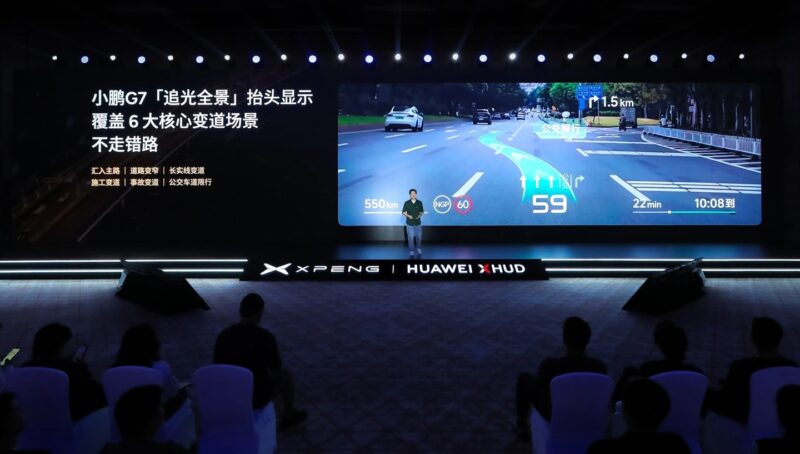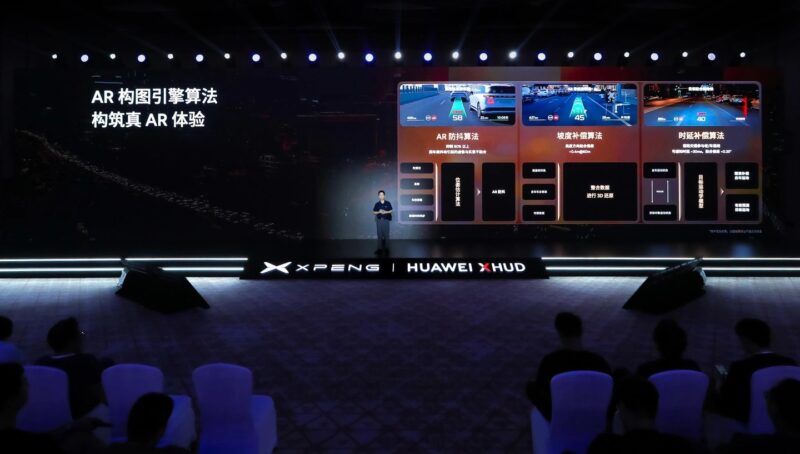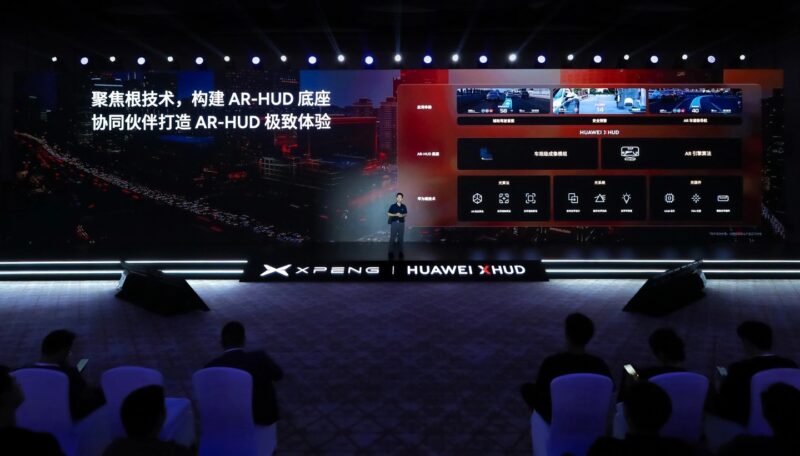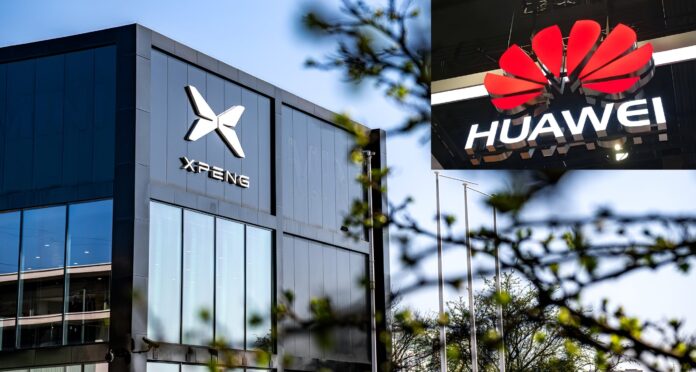Xpeng and Huawei announced the development of a new augmented reality head-up display (AR-HUD) system, named “Chasing Light Panorama,” designed for Xpeng’s upcoming mid-size electric SUV, the G7. The system integrates Huawei’s hardware with Xpeng’s software, providing enhanced navigation and driving assistance features.

The AR-HUD features an 87-inch display area capable of projecting information across multiple lanes and covering eight driving scenarios: main and auxiliary roads, junctions, curves, roundabouts, offset intersections, tunnels, slopes, and elevated highways. The G7 will debut and open for pre-sale on June 11, with deliveries planned for the third quarter. The vehicle is expected to be priced at around 250,000 yuan (approx. 36,000 USD) and focuses on innovative features and interior space.

The system combines Huawei’s optical algorithms, optical systems, and components with Xpeng’s imaging modules and AR composition engine. It overlays digital navigation onto the real-world view to support driver decision-making and improve safety.

The AR-HUD covers 85% of the NTSC colour gamut, offers brightness above 12,000 nits, and has a contrast ratio 1800:1. It uses self-developed LCoS (Liquid Crystal on Silicon) imaging modules and automotive-grade chips. Algorithms for image stabilisation, slope compensation, and latency correction help reduce image jitter caused by vehicle movement. The AR-HUD can project navigation routes directly onto the road ahead.

The system supports lane-level navigation, assisted driving, and safety alerts. The lane guidance aligns with actual road markings and functions across cities and complex intersections, including roundabouts. The AR “light carpet” displayed matches the road surface and adjusts for obstacles and slopes.

The AR-HUD warns about vehicles changing lanes, pedestrians entering the road, and side and rear alerts. It also assists in rain or fog by identifying vehicles and lane markings.

Huawei’s XHUD-AR engine integrates radar and cameras to deliver AR icons with low offset on uneven roads and predicts vehicle trajectory 0.3 seconds ahead. Huawei’s team includes over 7,000 engineers working on optics and algorithms. Their LCoS technology is used in vehicles such as the AITO M9, with 12,000 nits brightness and 2K resolution.

Xpeng’s XNGP intelligent driving system allows the AR-HUD to display information, including traffic light countdowns, blind spot warnings, and obstacle avoidance routes. The system is based on autonomous driving data covering millions of kilometres. According to Xpeng, the AR display reduces drivers’ need to look down at instrument panels and may contribute to fewer accidents.

The collaboration between Huawei and Xpeng follows previous disputes over autonomous emergency braking technology and represents a shift towards cooperation in automotive technology development. Huawei focuses on communication architecture and chip design, while Xpeng is responsible for vehicle platform and user interface development.

After the announcement, Xpeng’s stock price increased 4% on the Hong Kong Exchange, raising its market capitalisation to over 140 billion yuan (approximately 20 billion USD).

The Xpeng G7 and its AR-HUD system are expected to be available later this year, marking the introduction of this AR technology into the mid-size electric SUV segment.


